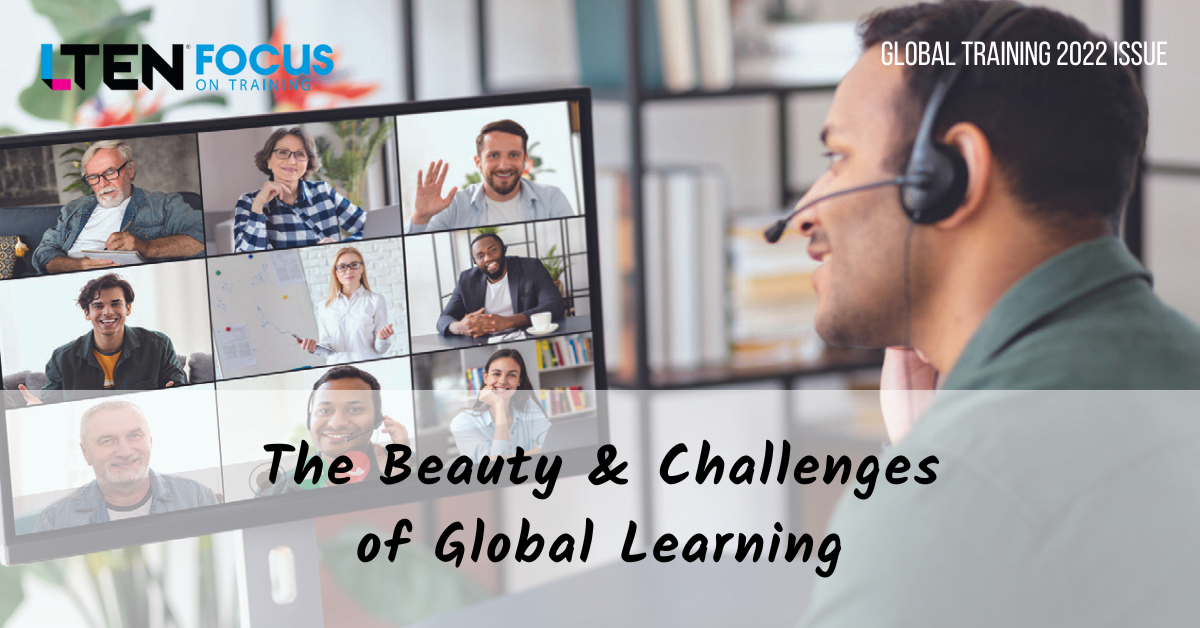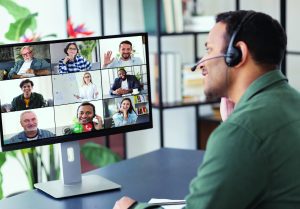
Feature Story – Marcello Rinaldi
Global learning must balance local nuances and the need to harmonize
When it comes to supporting the international business, the learning function is a key enabler of business impact. That is, if the function is designed in a way to support the specific priorities of the
business.
After almost 20 years dealing with international learning challenges, I would summarize them into these four buckets: scale and local differences, time to market, partnership and distance.
Scale & Local Differences
When it comes to focus on a single business unit (for instance, a business unit in Germany), things really can be fast-paced but ultimately focused. When dealing with more than 40 markets, with different dynamics, priorities, regulatory systems, payers’ approaches, etc., things can become overly complex, fast.
A global learning function must necessarily strike a balance between understanding the local nuances and the need to harmonize. It is very easy to get derailed because local differences generate a lot of buzz, preventing your team from delivering top-class learning solutions that can impact the bulk of your business.
Time to Market
Because your audiences, in particular infield teams, speak dozens of languages, and because the local label or regulatory systems may be different, it is paramount to centralize as much of the translation and localization effort as possible. When faced with the choice of delivering in English a learning solution that the colleagues in markets need to guide the creation of their own translated versions, or providing a 10-language solution that markets can use straight away, I would opt for the first option in nearly all cases.
Partnership
How many stakeholders do I have as a global learning leader? Last time I checked, it was a very long list. Therefore, prioritizing is key. What is also necessary? Nurturing those connections through ongoing touchpoints, cocreation sessions, deep dives for each market, etc.
Does this take a lot of time? It sure does. Is this necessary? It sure is.
Distance
Sometimes your work as a global learning professional is two or even three layers removed from your final audience – the sales representatives, medical science liaisons or key account managers – and this can become a problem. If my job is to make the business more effective and successful, how can I do so if I am not right there to observe what happens? The telephone game and performance consulting never go well together, for obvious reasons.
Complex Environments
The environment in which a global learning function operates is incredibly complex. There are several matrices that are intertwined. What’s a learning professional to do?
First, to situate themselves, understand their position within these matrices. Typically, the major ones would be:
- The international brand or product team, where the learning professional must be the key performance consultant, to whom the full team refers to support the business impact.
- The international learning team, comprised of professionals operating across several brands/products and including the specialists (such as a learning designer, or a video producer, if those roles are not outsourced).
- Regional and local learning colleagues, who, depending on your organization, may report directly to you. Obviously, this is a key organizational design difference. If the model is very decentralized, a strong level of engagement is needed to ensure there is trust, collaboration and the ability to properly partner.
- Regional and local brand/product colleagues, who in many cases are natural partners of local learning colleagues. I also recommend having a direct connection, at least with a group of them, to get perspective at the local level. I would go as far as to include some selected field team members. The fewer filters between what you design and who receives those solutions, the better.
Key Focuses
I would provide four key recommendations based on the experience of my teams:
- Focus on simplicity. Confronted with the opportunity to constantly innovate with fancy learning solutions, I always go back to the mantra of performance consulting: What is the gap we are addressing here? What are the simplest and most economical solutions to address it?
Simplicity always pays off in the business world, but even more so in a global setting: If my team decides, for example, to opt for some fancy interactive video solutions that are costly to translate, that’s not good for anyone in the business. (This focus on simplicity is also what Dr. Roy Pollock teaches in the LTEN Six Disciplines of Breakthrough Learning. Check it out!)
- Focus on acceleration. Time-to-market is a key driver for new drug launches. The learning function, as a group of true performance consultants, understands that providing timely solutions that are fully embedded in the flow of the launch plan is most important. This is also why centralizing translation and localization can pay off in a big way.
I always think of global functions as enablers of local business impact. The more we can expand our enablement by reducing the local effort (time and money), the better.
- Focus on harmonization. Dealing with more than 40 markets should convince everyone that adopting standards, templates, a same jargon and a brand book should be necessary. Still, I too often see the attempt to do something different.
I understand the urge to do it. In a commercial or marketing organization in particular, the push to provide fresh approaches is always there. This is acceptable if it does not create complexity.
Adding more roadblocks to adopting those learning solutions is clearly not a good way to support business performance.
- Focus on networking. There is never too much networking you can do as a global learning professional. You should at least do the following:
- Have regular touchpoints (one or two per year) with the global senior leaders who are driving a franchise.
- Have more regular touchpoints (one per month) with the global directors who lead a brand/product.
- Have almost daily connection with the global brand/product team. (This is the working group, and you are part of it.)
- Have ad hoc sessions with your sounding board of local market brand and field team members. This is the first way to observe and learn about their challenges, and secondly to pressure-test your approaches.
- Have regular touchpoints (one per month) with the regional and local learning colleagues.
- Have regular touchpoints (one per month) with the regional and local brand/product colleagues.
- Have almost daily connection with the global learning colleagues who support your work (learning admins, learning designers, etc.).
- Engage with external partners (medical writers, agencies, learning developers) not only to get your job done, but also to learn about their work,be inspired and get their perspectives.
This is a lot of networking, isn’t it? It sure is. Is it all necessary? I think it is.
Of course, you will flex based on your organization’s design (centralized versus decentralized) and on the scale of your global scope (are you serving five markets or 40?), but the approach is the same. Networking is the key ingredient for success for a global learning organization’s success.
The Diversity Component
I would finally focus on one element that runs across all the suggestions above: diversity and inclusion. A global team must support the business across many diverse geographies and cultures. Whereas the company and life sciences cultures are common denominators, understanding the nuances of each culture is key.
A global learning team must be made of people coming from different international experiences, and it should also empower every team member to continue to learn and develop their cross-cultural
skills.
A book I have passed on to dozens of colleagues is “The Culture Map,” by INSEAD Professor Erin Meyer. I have learned so much both from my team members’ cultures and by books such as this one.
Ultimately, a perk of a global role is also to travel to different places. I always recommend my team members use the time to learn the local culture, eat the local food and go out with a local field member whenever possible. All of this is incredibly valuable in the work you will drive as a global learning professional.
What About Virtual?
I know many learning professionals today look toward virtual or hybrid learning. I started my career in video learning in 2002, so I am passionate about anything delivered online.
Over the years, I have come to appreciate the needed balance between face-to-face and remote learning interventions. Also, and more importantly, between “remote live” and “remote on demand.”
There is clearly a space for each one of them, but again the key questions are: What is the performance gap you are trying to solve, and what is the most effective and most economical way to fill that gap? All the rest is buzz and noise. Addressing this question in a professional manner is what differentiates strong business partners from old-school course developers.
Conclusion
Leading a global learning team is a complex job. If you are already doing this, enjoy the journey. If you are aspiring to it, maximize your opportunities to learn about different cultures, languages and life sciences differences. For example, take a horizontal move to work on a local learning task. Or take a course in cross-culture dynamics. All of this will go a long way in making you more successful in the long run.
Operating in a cross-culture environment is complex whatever your job is. When your task is empowering people, it is even more difficult. If you fail to understand the mental models of a country, you will face challenges trying to work on the behaviors of their people.
Marcello Rinaldi is a global learning director at AbbVie. You can email Marcello at Marcello.rinaldi@abbvie.com.










